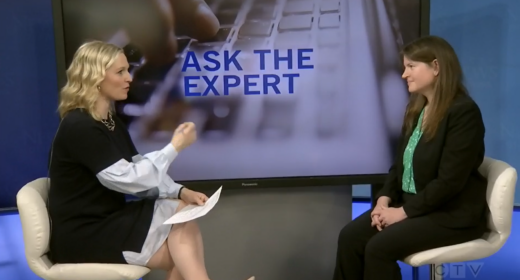Insurance, according Ambrose Bierce in his popular satirical work the Devil's Dictionary, is defined as "an ingenious modern game of chance in which the player is permitted to enjoy the comfortable conviction that he is beating the man who keeps the table."
In the field of car insurance, there is little doubt that the "comfortable conviction" – if there ever was one – is wearing thin. While competition among the auto insurers for your premium dollar seems to have escalated over the years, there is still ample evidence that many of us remain disenchanted with the auto insurance system. According to a survey completed by the NFO CFgroup in November 2003, there is an overwhelming view held by Canadians that the auto insurers continue to hike premiums for the single purpose of increasing profits.
While it would be easy to write an entire article bashing insurance companies, digging a little deeper into the survey it becomes all too apparent that the vast majority of Canadians may simply not understand how their auto insurance premium is quantified or, for that matter, how to customize their insurance to better suit their individual circumstances. It seems that, while the ability to purchase auto insurance has become increasingly more convenient – from grocery stores to banks — knowledge about automobile insurance itself has failed to keep pace. As such, the aim of this article is to provide you with a primer of sorts on automobile insurance in Ontario, so that you may review your own insurance needs with a better degree of understanding and make appropriate adjustments that may just reduce your insurance premium.
It took a little more than half a century for companies to begin issuing policies against the risk associated with driving a "motor car". In the Law of Motor Insurance, Robert Merkin remarks that the first recorded private car in England was built by Walter Hancock in 1838 and demonstrated by him in Hyde Park. The first motor insurance policy was apparently issued by the General Accident Fire and Life Assurance Company in November 1896 but was limited in scope, primarily to first party losses. However, as interest in cars increased and advancements were made to their construction, it wasn't long before Britain recorded what may be described as the world's first pedestrian versus car fatality. (The first motor vehicle fatality is actually attributed to Mary Ward who died after being ejected from her family's automobile and swept under its rear wheel in 1869.) On August 17th 1896, Bridget Driscol was struck while crossing in front of the path of an automobile on the grounds of the Crystal Palace in London. The vehicle was apparently travelling at 4 mph at the time. After ruling that the incident was an "accidental death", the coroner is reputed to have remarked that "he hoped such a thing would never happen again."
In reality, of course, the popularity of the car continued to mount as did the injuries caused by their use. It is not surprising then that a little more than a year after Bridget Driscol was struck and killed, insurers began issuing coverage for the liability risks associated with the use of the car. According to some website sources, Dr. Truman J. Martin of Buffalo, N.Y., purchased what is believed to be North America's first automobile liability policy from Walter G. Cowels, the local agent for the Travelers Insurance Company. The Travelers policy called for an annual premium of $11.25 (about $300 when adjusted for inflation) and offered $10,000 (about $250,000 in today's measure) protection against liability for damages to persons or property of others by reason of the operation of his motor car. While Dr. Truman may have the distinction of being the first to purchase liability insurance, he would certainly not be the last. One hundred years later, and the automobile liability policy is not only as ubiquitous as the cars they cover but in most jurisdictions in North America, such policies are mandatory.
With that brief background, it should be readily apparent the original aim of the automobile policy was to provide protection against the prospect that the use of your car could cause damage to other people or their property. This remains, perhaps, the most commonly understood definition of how your automobile policy works. Yet, liability coverage – when the insurer will intercede on your behalf to pay money to someone else for your negligent use of an automobile – is only one facet of the Standard Ontario Automobile Policy (OAP). In fact, while every automobile insurer in the province must use the OAP – thus insuring consistent language and minimum levels of insurance coverage – there is still a significant amount of customization that you, as the policy holder, may choose to make. Those decisions in turn will affect your premium.
For example, while every automobile policy in Ontario must provide for statutory accident benefits, commonly referred to as no-fault benefits, the standard weekly coverage for income loss (set at a maximum of $400 per week or approximately $20,800 per annum) may not be sufficient to meet the needs of individual policy holders. Indeed if you are earning more than $20,000 per year, there should be no doubt that the standard benefit is grossly inadequate (in the absence of other insurance) and, accordingly, you should consider purchasing an optional benefit to increase the maximum to $600, $800 or $1000 per week. To do otherwise would essentially leave you financially devastated were you to suffer injuries that preclude you from returning to work. Similarly, while the standard limit on recovery for medical expenses and the like is set at $100,000, it is possible to purchase up to $1.1 million dollars in optional coverage. When you consider that many forms of treatment are either not covered or capped by the Ontario Health Insurance Program, such as physiotherapy and chiropractic treatment, increasing your benefits under the no-fault portion of your automobile policy may make a significant amount of sense.
While purchasing the optional statutory accident benefits may have the effect of increasing monthly premiums, there are other areas of customization that should result in a premium reduction. In particular, you may want to assess the value of the vehicle being insured to determine whether you require loss or damage coverages. Like the no-fault benefits described earlier, which provide coverage for injuries suffered by you as a consequence of an accident, the OAP also provides optional coverage for damage done to your own automobile. As with all aspects of your policy, however, you may wish to consider whether it is essential to you to have those coverages. For instance, if you are driving a late-model vehicle that has a limited replacement value, carrying "all perils" coverage – which is the most robust level of loss or damage coverage you can acquire in Ontario – on that car may be costing you significantly more money in premiums than you will ever hope to recover under the terms of the policy. As such, you should consider reducing or eliminating such coverages to suit your needs. Likewise, the premium on your policy can frequently be lowered by asking for a higher deductible. The deductible is that portion of the loss that you cover and is frequently set at $500. By increasing the deductible, you assume a greater portion of any future loss (e.g., the first $1,000 etc) but receive the corresponding benefit of paying less on an annual and ongoing basis.
Finally, even if you are intimidated by the prospect of customizing your insurance coverage to more accurately reflect your insurance needs, you can still take a number of steps to reduce your annual premium. Beyond simply maintaining a clean driving record, it is important to understand that rates are charged based on where you live, the kind of car you drive, how you intend to use the car and how many other people will be using it in your household. As such, you can take proactive steps to adjust your driving profile as a means of reducing the cost of insurance. For instance, in certain circumstances it may be possible to reduce your premium by asking your insurer to issue an endorsement to your policy which excludes a poor driver in your home from having coverage. Similarly, there are both optional and mandatory discounts offered by every insurer that you should enquire about at the time you take out or renew your policy. For example, in Ontario, insurers are legally obligated to offer a premium discount on the no-fault portion of your insurance policy if you are over the age of 65 or otherwise receiving a Canada pension registered under the Income Tax Act. While your insurer may already have applied that discount automatically, you may wish to satisfy yourself that such a discount is being received.
Regrettably, it would be impossible in an article of this kind to identify every area where you might benefit from premium savings or improved coverage. Instead, I would simply urge you to consult with your insurer to see how you might make adjustments to your policy to better suit your needs. While doing so may still leave you in that percentage of the population who are frustrated with the cost of insurance in the province of Ontario, I am hopeful that, by taking control over your driving profile and, by extension, your insurance policy, you may bring yourself closer to achieving the "comfortable conviction" described by Ambrose Bierce, or at least know that you kept some money in your pocket for your troubles.
[This article was originally published in the June 2010 issue of Fifty-Five Plus Magazine. Author: Joseph Griffiths]


